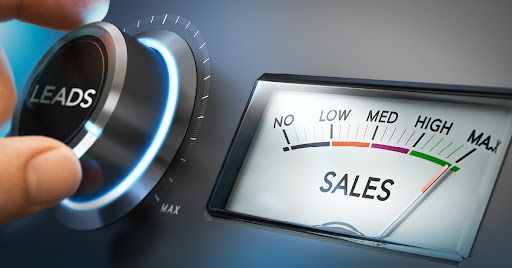A Sales Development Representative (SDR) has one primary focus: sales prospecting. SDRs are responsible for a number of key tasks that are important for any SaaS company that wants to grow its marketing efforts.
Typically, the SDR is involved in the early stages of the B2B sales process. In comparison to B2C, B2B sales usually have many more stages and involve a higher number of people.
SDRs may eventually move into the role of an Account Executive, or even move into a different department altogether. It goes without saying that SDRs need to be extremely familiar with the company’s products.
Let’s take a closer look at the importance of SDRs in growing a SaaS company:
Sales Prospecting:
There are two main types of sales prospecting: inbound and outbound.
Inbound prospecting
Inbound prospecting involves further developing established relationships. This means that the lead has already had some sort of interaction or experience with your product. The aim of inbound prospecting is to consolidate positive B2B relationships for the long term.

Outbound prospecting
It is common for SDRs to put their time and energy into outbound prospecting rather than inbound prospecting. This involves cold outreach methods such as cold calling and email outreach.
The purpose of carrying out outbound prospecting is to build a sales pipeline, and build relationships that can lead to new business opportunities in the future.
SDRs can also have a few other responsibilities:
- Look into potential budget-holders or decision-makers. B2B involves a greater number of decision-makers in the process than B2C, making the role of SDR that much more important.
- Arrange callbacks or appointments for any qualified leads back to the sales team in order to reach closure or to allow for further development.
- Working with the marketing team to gather more leads and improve the quality of any leads obtained.
Why are they necessary?
One fact that doesn’t receive enough attention is that an SDR develops the core skills necessary to become an effective Account Executive (AE).
AEs that initially started as an SDR have obtained valuable experience in sales that would be difficult to obtain otherwise. Let’s take a quick look at what an AE does to see how similar it is to an SDR:
- Building long-term relationships to further benefit the company.
- Following up with any potential leads multiple times throughout the sales cycle.
- Carrying out sales techniques such as cold calling and in-person meetings to develop the business.
- Create business plans to meet the sales goals of the company.
The AE is more involved in closing deals toward the end of the sale cycle, making them just as important as SDRs in the whole process. However, it’s also important to note when your company should bring on board an SDR.
Is it better to have them during the early stages of your company? It can heavily depend on the exact numbers of the company.
Not having enough funds and bringing on SDRs too early may make it difficult to support them with the right tools and training. It could be a wise decision to bring on SDRs when your company reaches a specific threshold.
Deciding the exact time at which SDRs should be brought in can be a grey area. However, one thing is for certain. Outbound sales are one of the best ways for a business to scale, even for larger businesses.
That means that SDRs can be seen as a worthwhile investment for any company that fully supports them.
AEs are also another important element of successfully scaling up a business. Again, having a balance of AEs and SDRs, along with bringing on the right one depending on the current circumstances of the business is something that has to be considered. Both are valuable assets and play key roles.

Improving the usage of SDRs for B2B SaaS
Simply having an SDR isn’t automatically going to improve B2B sales on its own. There are various things that can be done to maximize the efficiency of an SDR.
One such solution can include improving the relationship between the SDR and AE, as it is imperative for the business that this relationship is alive and well.
While SDRs focus on building up the lead from the outreach, whilst AE focuses on closing the sale after developing rapport.
Hence, ensuring that both the SDR and AE know exactly what their roles are in the entire process is crucial. This also means that the AE needs to step in at the right time, and try to avoid any unnecessary meetings or steps to allow the entire process to go smoothly.
Another thing to consider is whether the SDR should be a part of the marketing or the sales team. On the surface, it may seem like having the SDR on the sales team would be the obvious choice.
They do spend a lot of time focusing on cold outreach and developing relationships with new leads.
However, it can be argued that there could be more benefits to having the SDR on the marketing team instead. SDRs can provide direct insight on trends and information they’ve picked up from talking to prospects.
This can allow the marketing team to make more informed decisions than they would otherwise.
The marketing team can also provide information on the types of leads to expect, and when exactly the next marketing campaign is going to begin. This is something that also needs to be judged on a case-by-case basis.
SDRs could already be performing well on the sales team, meaning that it wouldn’t be necessary for them to move to the marketing team.
On the other hand, moving the SDR to the marketing team could give them the extra information and insight they need to get leads that are of higher quality.

To wrap up
SDRs are a valuable asset in scaling up a company at almost any size. They play a key role in cold outreach in the world of B2B SaaS. AEs are also another valuable asset.
Your SaaS company should consider which one to take on at this time based on where the company is in terms of sales goals.
SDRs primarily focus on cold outreach techniques such as cold calling and emailing in order to build up new leads, whilst AEs focus on closing the deal. Both are an integral part of the sales cycle.
Other factors such as putting the SDR on the marketing team instead of the sales team, along with the relationship between the SDR and AEs on the team can also impact efficiency and need to be considered.
Want to boost your skills for maximum growth? Get segmentation certified here!


